







Young children are constantly learning. They learn from interaction with other people. If a child has difficulties in their social attention, interaction and communication skills, their ability to learn from others is affected.
Social attention interaction and communication difficulties can include reduced, infrequent, or inconsistent:
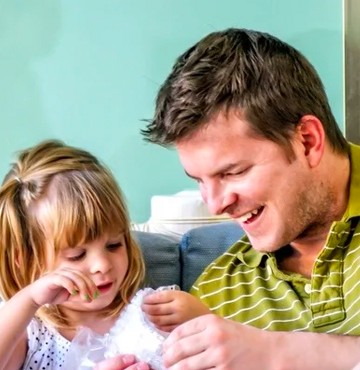

Speak to your child in the language you know best!
Watch and comment
Talk about the objects, people, actions and events your child is interested in.Describe what is happening
When playing with your child, talk about what you are doing. Example: While ‘feeding’ a baby doll, say “baby is hungry, baby is eating the food”.Repeat the sounds and words that your child says.
Pause between words and phrases and wait to see if your child responds or copies what you say.Exaggerate key words
Example: “Look a train”, “It’s a dog” or “Give me the book, please”Build on what your child says
Example: If your child has:Ask questions.
Encourage your child to respond by asking questions then pausing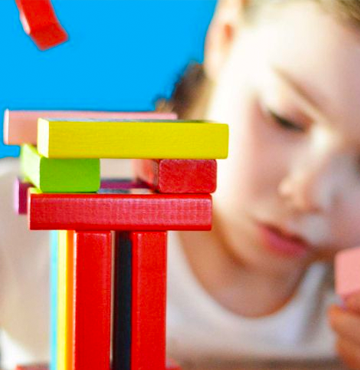
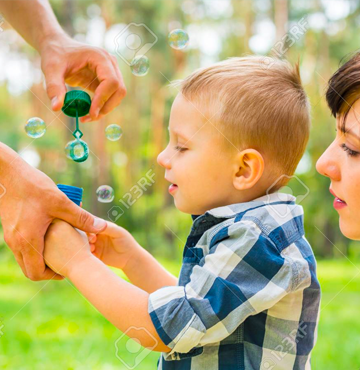
For more information about the different approaches to teaching skills to children visit:
You can support your child’s learning and communication by showing them what you are talking about. There are a number of ways you can do this.
Show what you want your child to do
Children learn by watching others. When you have your child’s attention, slowly break down a task and provide step-by-step guidance so they can see what you’re doing.Example: You can demonstrate how to read a book by showing your child how to turn the pages. You can also show them to do it themselves by physically guiding their hand.
Say what you want your child to copy
You can verbally model words or phrases for your child to use.Example:As you give something to your child, say “Thank you”.
Use real objects
Showing your child the object you are talking about can help them to understand that they have names.Example:As you say “book”, hold up the book to show your child.
Use gestures and actions
You can help your child to understand the meaning of your words by adding gestures and actions. Make these movements obvious so your child notices!Example:Gestures include head nod for ‘yes’ and head shake for ‘no’, waving for ‘good-bye’ etc.
Use pictures
Showing your child pictures of what you are talking about can also help them to understand the meaning of your words.Example:Show your child a picture of their shoes, and then say, “get your shoes”.
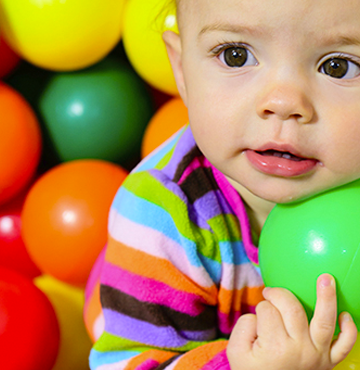
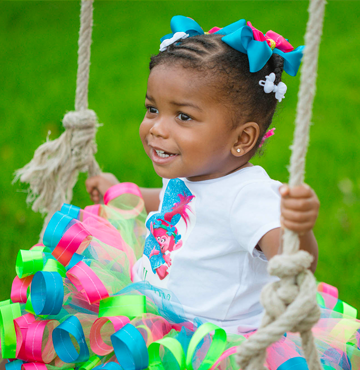
You can borrow fun and educational toys, games, puzzles and activities from a Toy Library!
When playing, follow your child’s lead by joining in with whatever they are doing or the things they are playing with. This makes play enjoyable for both you and your child.
Playing with toys and games together can encourage your child to communicate with you by asking for help, asking for more, taking turns, looking at you, making sounds or saying words etc.
Toys that encourage communication include:
Bubbles - blow some bubbles for your child to catch. Wait and see if your child will look at you, gesture, or use a sound or word to tell you they want you to blow more bubbles.
Wind-up toys and Music boxes - wait and see if your child asks you for help. Notice if they look at you, gesture, or make a sound when something happens.
Balls - roll a ball towards your child and then encourage them to roll it back to you.
Blocks - build a tower and knock it over – does your child look at you, gesture towards you, or make a sound? Keep some blocks to yourself and see if your child asks for more.
Game to play include:
Peek-a-boo - hold up a blanket and say, “where’s (child’s name)?” Then pull blanket down with excitement and say “Peekaboo.” Repeat.
Tickles - hold your hands up in front of child and move hands in tickling motion while saying, “Tickle, tickle, tickle.”
Chasey/I'm going to get you - say “I’m gonna get you” several times, as you keep moving closer to your child with your hands out in front of you.
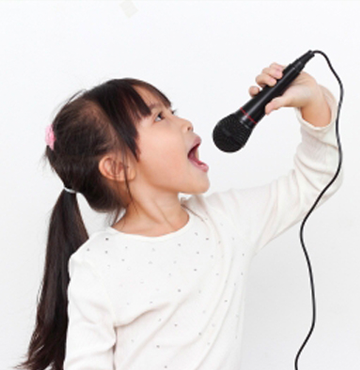
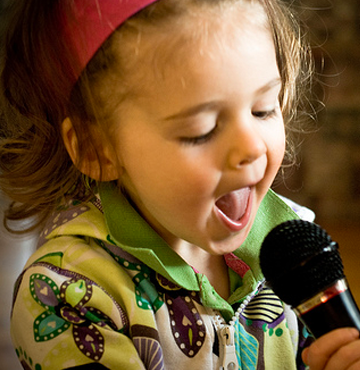
Visit the Raising Children’s Network Baby Karaoke page, which has animated videos with lyrics:
Sing songs that use rhyme and repetition
Sing familiar songs and repeat over and over. After singing the song a few times, pause and watch to see if your child will use their body or words to tell you they want the song to continue.
Add simple actions or movements You can help your child to copy your actions or movements. Gradually reduce the help you provide them until they are able to copy the actions by themselves.
Try sitting in front of your child when singing so they can watch your actions.
Remove distractions such as the iPad or television so they can focus on interacting with you.
Songs appropriate for all ages:
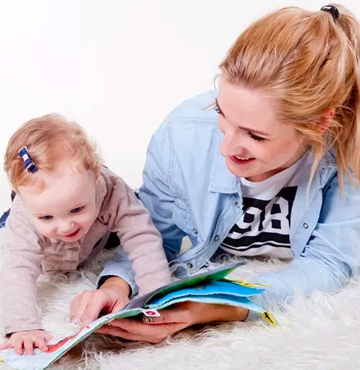
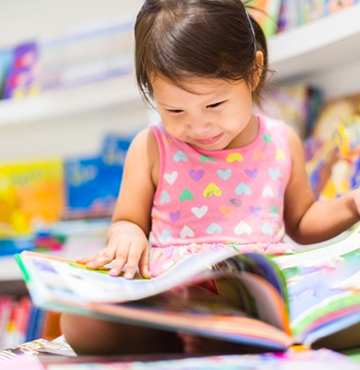
Visit your local library to borrow a range of children’s books for free or attend a story time session:
Read books that have good rhyme, rhythm and repetition and readability.
Watch to see what pictures your child looks at and name that object.
Ask simple questions about the pictures such as, “Where is the dog?” and watch to see if your child points or gestures.
Pause before saying a certain line or phrase in the book to see if your child will complete it.
Link to your child’s interests. Let them choose a book in the library. Show them two to choose from if they find it hard to make a decision.
Appropriate books for younger children (12 months and older) may include:
Amaze (Autism Victoria) is the peak body for autism in Victoria, providing information and resources connecting individuals, families and professionals to supports for autism.
www.amaze.org.au
Raising Children Network
Research-based information about autism and general child development:
raisingchildren.net.au
Autism Awareness Australia is a not-for-profit autism education and awareness organisation.
www.autismawareness.com.au
Early intervention. For information about referral services and supports, and eligibility for the NDIS contact your local Early Childhood Early Intervention (ECEI) partner office.
ndis.gov.au : ecei locations
Therapy Connect
amaze.org.au : threapy connect
Raising Children Network Therapy Guide
raisingchildren.net.au : autism
The Early Intervention Indigenous Liaison Officer (EI ILO) Program
Provides families in Aboriginal and Torres Strait Islander communities with the tools, language and information to ensure they are confident to visit a GP or paediatrician.
eiilo.com.au
Early Days Amaze has free workshops about autism
amaze.org.au
PlayConnect is a network of autism-specific play groups by Playgroup Australia.
amaze.org.au : playconnect
My Time is a parent support program for parents and carers of children with a disability, developmental delay or chronic medical condition.
amaze.org.au
A free mobile application that parents and caregivers can use to track children’s social-communication milestones and the early signs of autism.
asdetect.org
Autism information advisor service:
( Amaze )
Ned – Understanding Autism Short Film for Indigenous Families
youtube.com : ned
The Parenting Spectrum Podcast
abc.net.au : the parenting spectrum




The Olga Tennison Autism Research Centre (OTARC) is Australia’s first centre dedicated to autism research. Through high-quality scientific research, innovation and translation, OTARC aims to expand knowledge to enrich the lives of autistic people and their families.

Research themes:

As a Research Centre within the School of Psychology and Public Health, OTARC research was recently ranked as ‘well above world standard’ by Excellence in Research Australia (2018).
We have extensive experience in collaborating with industry and government partners to translate research into evidence-based tools and practices.
We have trained 1400 Victorian Maternal and Child Health nurses in our early autism detection method, which is 81% accurate.